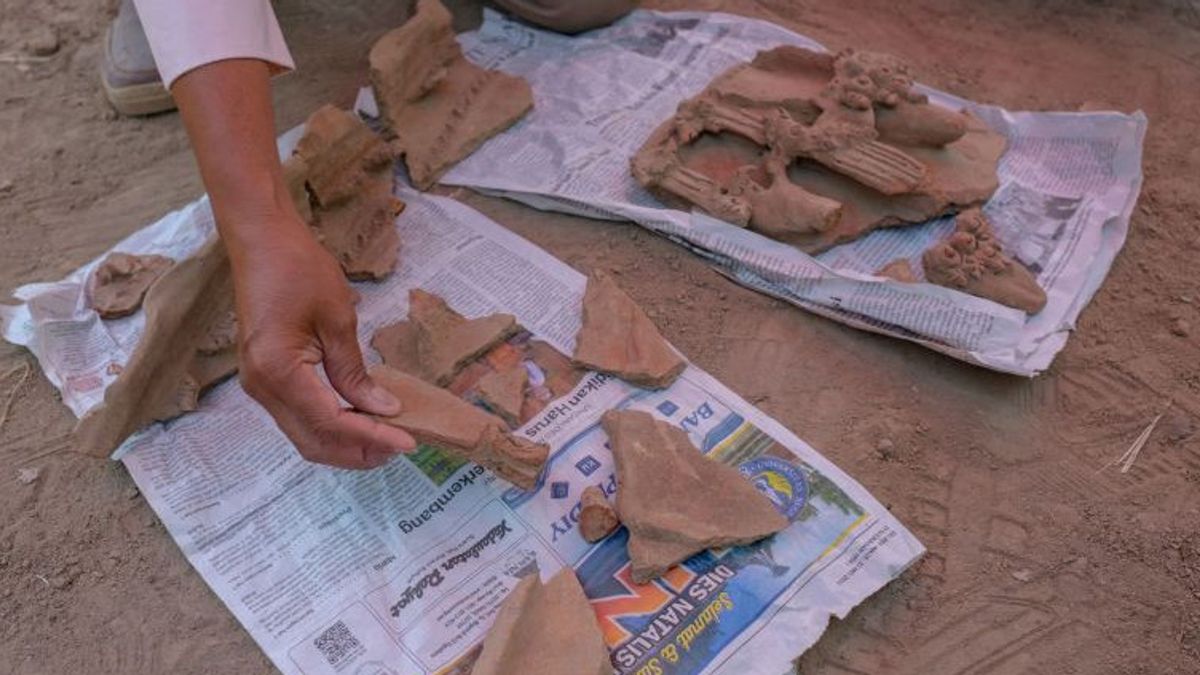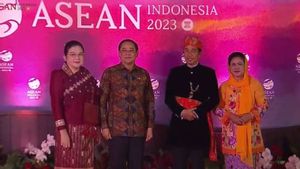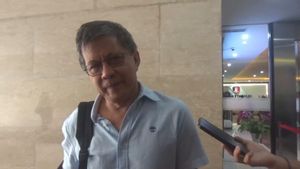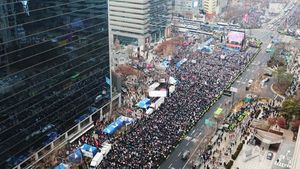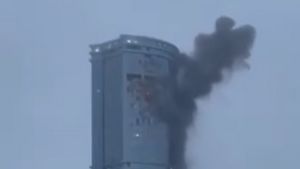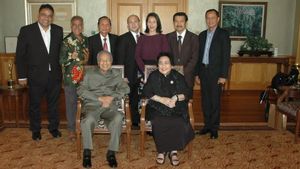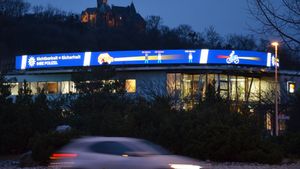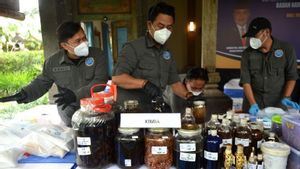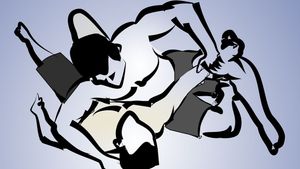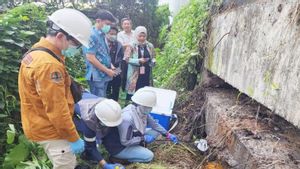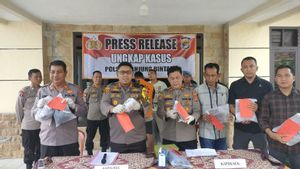YOGYAKARTA - The excavation team of the Yogyakarta Special Region Culture Service found fragments of pottery that were suspected of being a water container for the Majapahit Kingdom era at the Keputren Site, Kerto-Pleret Cultural Conservation Area (KCB), Bantul Regency.
The Field Coordinator (Korlap) of the Keputren Hery Priswanto's Expansion Site Excavation Team said that the excavation at the Keputren Site was the final series of research conducted by the DIY Disbud in 2023.
"During my research at Pleret since 2007, this finding has only been in the form of an open water container with ornaments similar to the ornaments I met in Torowulan Mojokerto, so there is a resemblance to the Majapahit Kingdom era," he said as quoted by ANTARA, Wednesday, September 6.
The open water reservoir with ornamental motifs and characteristics of the Majapahit Kingdom era was found during the excavation of the Keputren Site which was carried out on private land owned by local residents from August 10, 2023 to September 7, 2023.
After the excavation, he said, the team closed the site and fragment artifacts found in the data and handed over to the DIY Disbud for conservation and security activities.
According to Hery, the fragments of the pottery container for water without closed covers made from the 13th century Majapahit were found in one of the excavation boxes suspected of being ancient waterways dating back to the 17th century or the era of the Islamic Mataram Kingdom in a incomplete state in the form of pieces.
Interestingly, continued Hery, even though it had been destroyed, the character of the ornamental motif characterized by the ancient Majapahit era was still clearly visible and prominent in its carvings.
The open water reservoir is estimated to have a diameter of about 50 cm which was commonly used by aristocrats at that time.
"The existence of this artifact is not an arbitrary person. Keputren itself is a Pleret settlement used by the king's daughters and her concubines. With the findings of artifacts in the form of water containers, this structure can answer that this Keputren has important roles and values as well as part of the Pleret Palace that once existed in the 17th century," he said.
Hery, who is also a researcher at the Archaeological, Prehistoric and History Research and Innovation Center of the National Research and Innovation Agency (BRIN), said that the Keputren Site Excavation Team found two structures, namely the foundation structure of a wall that spanned from east to west with a width of approximately 70 cm and was made of bricks.
Second, is a structure suspected of being a water channel with a north-south orientation.
"In this water channel structure, ancient fragmentation artifacts were found in the form of containers or water places that were not intact. These water reservoirs vary widely, some are closed and open. Closed water reservoirs are found in the form of shards from jugs, then open water containers with pasted carvings," he said.
Hery admitted that he had once found fragment artifacts with a similar archipel and decoration carving model when he conducted research in the East Java area.
"The thought of fragments found at the Keputren Pleret Site is the same as carvings from the ancient Majapahit era," he said.
Thus, the existence of the object already exists and is used by people who do not carelessly at the Keputren Site considering that the artifacts of water containers owned by the community are generally plain without carvings.
SEE ALSO:
The findings of the ancient fragment artifacts were then submitted to the DIY Disbud for conservation and security activities and stored in the Pleret Museum.
Relatives of the land owner of the Keputren Site as well as the KCB Management Coordinator Kerto-Pleret Supriyanto said that the location of the site was still a private land belonging to his aunt who is now living in Malang so that the person who took care of the land was handed over to his father.
Before being owned by his aunt, this garden was said to have been a bamboo forest and a sinden cemetery.
Many residents also took bricks and rocks at this location to be used as livestock cages for local residents.
"Initially it was excavated, there was indeed a brick on top of a bedrock so that we presented it at the DIY Disbud and finally opened it. This is the first time the excavation of the land status has not been released, this is related to my duties at the Kerto-Pleret KCB. Hopefully this land can be acquired so that it becomes the enrichment and complete story of the history of KCB Kerto - Pleret," he said.
The English, Chinese, Japanese, Arabic, and French versions are automatically generated by the AI. So there may still be inaccuracies in translating, please always see Indonesian as our main language. (system supported by DigitalSiber.id)
